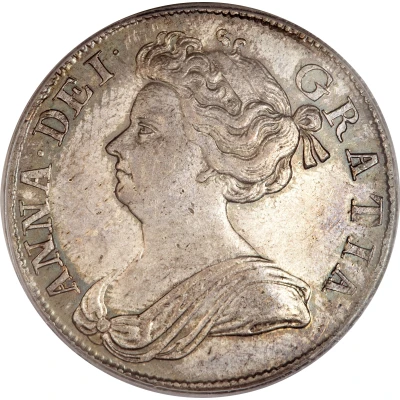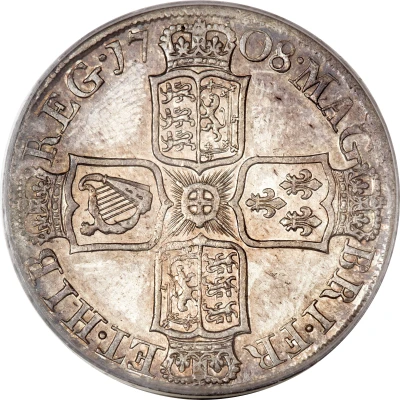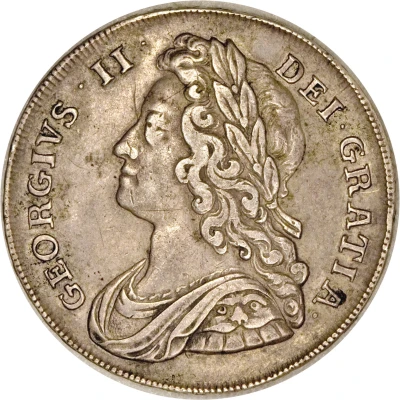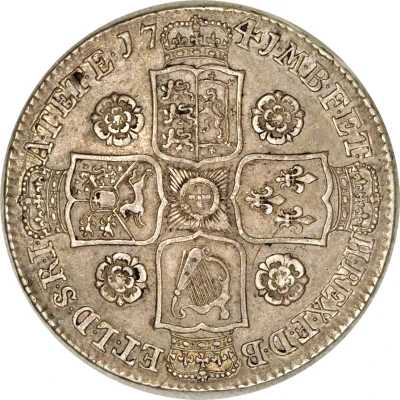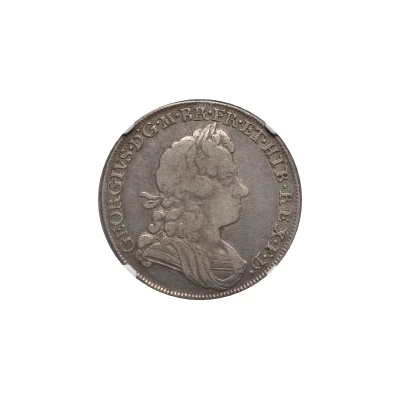
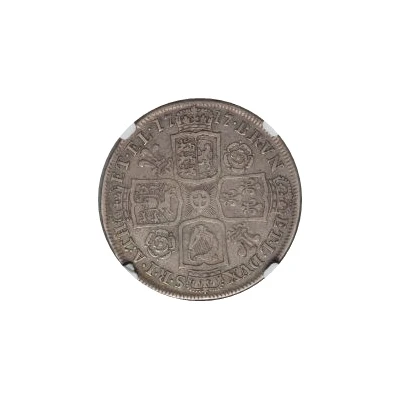

© Heritage Auctions
½ Crown - George I
| Silver (.925) | 15.05 g | 33 mm |
| Issuer | United Kingdom (United Kingdom, British Overseas Territories and Crown Dependencies) |
|---|---|
| King | George I (1714-1727) |
| Type | Standard circulation coin |
| Years | 1715-1726 |
| Value | ½ Crown (⅛) |
| Currency | Pound sterling (1158-1970) |
| Composition | Silver (.925) |
| Weight | 15.05 g |
| Diameter | 33 mm |
| Shape | Round |
| Technique | Milled |
| Orientation | Coin alignment ↑↓ |
| Demonetized | 31 December 1969 |
| Updated | 2024-10-09 |
| Numista | N#13075 |
|---|---|
| Rarity index | 92% |
Reverse
Crowned cruciform shields with central Garter star, divided date above, legend around.
Note: varieties exist (see below)
Script: Latin
Lettering: BRVN ET·L·DUX S·R·I·A·TH ET·EL·17 17·
Translation: Duke of Brunswick and Luneburg, High Treasurer and Elector of the Holy Roman Empire
Engraver: Johann Ochs
Edge
Regnal year in words, e.g anno regno tirtio means third year of reign
Comment
The standard weight of these coins was 15/31 troy ounce (232.3 grains).Reverse die varieties:
KM#540.1, Sp#3642 (1715-20) roses and plumes in angles;
KM#540.2, Sp#3643 (1723 only) SS and C in angles;
KM#540.3, Sp#3644 (1726 only) small roses and plumes;
1723 SSC variety was struck with silver discovered by the South Sea Company in Indonesia.
Interesting fact
One interesting fact about the ½ Crown - George I 1715-1726 coin is that it was minted during a time when the United Kingdom was still using the old Julian calendar, which was introduced by Julius Caesar in 45 BCE. The coin was minted in the year 1720, which in the Julian calendar was actually the year 1719, as the new year did not begin until March 25th. This means that the coin was minted in what we would now consider to be the previous year, highlighting the historical context in which it was produced.
